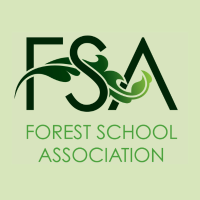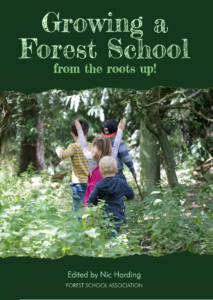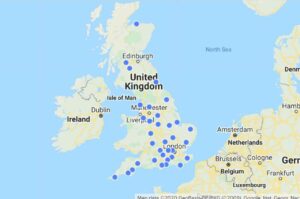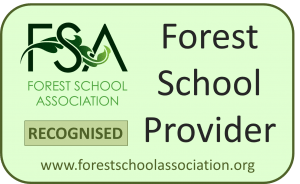Pale barked beauty – Birch is a very giving tree, both to other species and to humans. As an early successional species it acts as a ‘nurse species’ by changing the environment to be more hospitable for later successional species. It also has a huge range of physical, medicinal & spiritual uses that humans have depended on for generations.
 Other Names: Lady of the woods
Other Names: Lady of the woods
Tree Ogham: Beth (December 24th – January 20th)
Height: Slender tree up to 25 metres (1)
Leaf Properties & Uses: Triangular shaped leaves with toothed edges and short leaf stalk. The fresh leaves and buds can be steeped in boiling water to make a medicinal tea. Birch tea is a diuretic and is good for general detoxing and particularly for urinary complaints, rheumatic & arthritic issues. The fresh leaves can be mashed up as poultice and put directly onto the skin to help eczema & acne.
 Flowers: Birches are monoecious, meaning both male and female parts are found on the same tree. Both male and female flowers are catkins (April – May). The male ones are longer (3-6cm), browny-yellow in colour and found at the end of twigs, often in groups of two to four. Fem
Flowers: Birches are monoecious, meaning both male and female parts are found on the same tree. Both male and female flowers are catkins (April – May). The male ones are longer (3-6cm), browny-yellow in colour and found at the end of twigs, often in groups of two to four. Fem
ale catkins are bright green. shorter and erect. (2)
Fruit: After pollination the female catkins thicken and turn darker. (2) Masses of tiny winged seeds are dispersed by the wind from the catkins in the autumn.
 Bark Properties & Uses: The beautiful pale bark of the
Bark Properties & Uses: The beautiful pale bark of the
birch is one of its key defining characteristics. It is silvery  white on mature trees, but often purpley-reddy-brown on young trees. Older trees have black knobbly markings, where the bark has expanded or where old branches have been. The tree sheds its bark (as all trees do as they grow) naturally in paper-like strips.
white on mature trees, but often purpley-reddy-brown on young trees. Older trees have black knobbly markings, where the bark has expanded or where old branches have been. The tree sheds its bark (as all trees do as they grow) naturally in paper-like strips.
The bark naturally contains resinous oils which make the bark waterproof and also flammable. This has led to Birch being a much revered species by indigenous peoples across the northern hemisphere. Birch Bark has been used by native peoples to traditionally make – baskets & containers of all kinds, roofing for wigwams, canoes, shoes, paper, and is invaluable for firelighting (see Activity – Birch Bark as a tinder).
 Wood Properties & Uses: Birch wood is a tough, pale or golden wood (sometimes with brown flecks in it). Its fibres can be quite long and ‘hairy’ when working it. Traditionally birch was used to make small turned items like toys, bobbins, and tool handles (3). As Birch has the association with new birth and new beginnings it would also be the wood that cradles were traditionally made from (4).
Wood Properties & Uses: Birch wood is a tough, pale or golden wood (sometimes with brown flecks in it). Its fibres can be quite long and ‘hairy’ when working it. Traditionally birch was used to make small turned items like toys, bobbins, and tool handles (3). As Birch has the association with new birth and new beginnings it would also be the wood that cradles were traditionally made from (4).
The flexible young twigs off the birch would be used for a variety of things – the heads of the besom broom (see folklore below), to fill in horse jumps.
Birch, being full of natural oils, is a very good firewood – it burns quickly and with a bright flame, so better used for the start of a fire, rather than to get embers. The oils in the bark are also a reasonably effective insect repellent.
Ecology: Birch are a pioneering species. With their masses of wind dispersed seeds they were 
the first tree species to colonise the Northern lands after the last ice age. As an early successional tree species they are well adapted to surviving in harsher environments. Their light airy canopy allows light to reach the woodland floor enabling plant life to flourish, whilst still proving and annual dump of nutrients as their leaves are shed each autumn. This improves the soil quality for other species to move in, as such Birch is sometimes used as a ‘nurse tree’ in modern forestry practices and landscaping. Birch is a relatively short lived tree, living only 80-100 years.
The main difference between the 2 common Birch species is that Downy Birch (Betula pubescens), as its name suggests, has downy hairs on its new twig growth, whereas Silver Birch (Betula pendula) is hairless. Downy Birch also has a more upright growth habit of the branches, compared with Silver birch that does the more stereotypical cascading, ‘pendulous’ branches. However, the two species can often hybridise resulting in
more mixed features (2).
 Pests: ‘Witches brooms’ are a type of gall caused by
Pests: ‘Witches brooms’ are a type of gall caused by  a fungus
a fungus
(Taphrina betulina). The infection causes the tree to respond by sending out lots of shoots which looks like a dense messy clump of twigs (sometimes mistaken for nests). There can often be a few in the branches of an infected tree. In folklore it was believed that these were caused by witches flying over the tree, hence the name.
The fungi Birch Polypore (Piptoporus betulinus) is commonly found on Birch. It is sometimes called Razor Strop as apparently barbers used to use a strip of the fungus ‘leather’ as a strop to hone their razor blades. Strips of the fungi can also be used as a plaster if you cut yourself….. that’s lucky for those old barbers!
Folklore: Birch being a pioneer represents new beginnings, inception and birth. It is the first tree  of the Ogham (Celtic tree alphabet) – ‘Beth’. Babies things (like cradles, toys, spoons) were often made from Birch for this association or charms made from Birch would be used to decorate cots to give the child ‘the best start’ (5). Being a white/silvery tree, it also has associations with purification. To be given a ‘birching’ was to be whipped by a flexible birch rod. It was believed that the birch would purify a person and drive out evil (4).
of the Ogham (Celtic tree alphabet) – ‘Beth’. Babies things (like cradles, toys, spoons) were often made from Birch for this association or charms made from Birch would be used to decorate cots to give the child ‘the best start’ (5). Being a white/silvery tree, it also has associations with purification. To be given a ‘birching’ was to be whipped by a flexible birch rod. It was believed that the birch would purify a person and drive out evil (4).
Birch, shining in moon-light and dainty in stature is associated with and symbolic of the young goddess in many traditions – particularly love or fertility goddesses such as Frigga & Freya (Norse), Arianrhod (Celtic), Eostre (Anglo-saxon). Therefore, Birch is a symbol of young love and has a few saucy associations – a birch trunk would have been the traditional maypole to decorate and dance around. Nothing like young people dancing around a huge phallus in the ground is there!? Besom brooms were traditionally made from a bundle of birch twigs (birch is symbolic of the female element) and a hazel shaft to be the handle (Hazel is symbolic of the male element). When making brooms, the male shaft was thrust into the female bundle of birch twigs… something to think about whilst you’re sweeping the floor!
Links to more lovely Birch stuff!
Activity – Tapping for Birch sap
Activity – Birch Bark as a tinder
References:
- Rose, F. (1981) The Wild Flower Key. British Isles – N.W. Europe. Fredrick Warne
- The Woodland Trust. (No Date) Silver Birch (Betula pendula). http://www.woodlandtrust.org.uk/visiting-woods/trees-woods-and-wildlife/british-trees/native-trees/silver-birch/ (Accessed: 4.4.16)
- Warren, P. (2006) British Native Trees – Their past and present uses. Wildeye.
- Gifford, J. (2000) The Celtic Wisdom of Trees – Mysteries, Magic and Medicine. Godsfield Press.
- Paterson, JM (1998) A Tree in your Pocket. Thorsons




